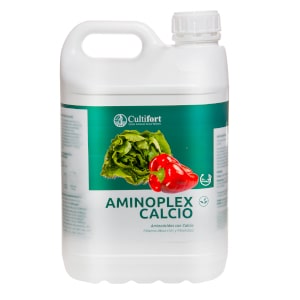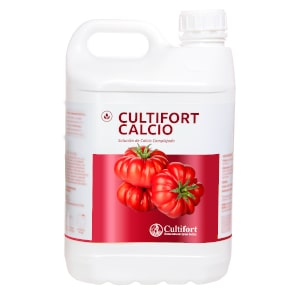So far, more than 70 chemical elements have been found in plants as part of their mineral composition, some in greater proportion than others, however, just because they are present in the plant does not mean that they have a function in the plant’s metabolism, many of them are present because they are found in the mineralogical composition of the soil. Because plants do not have an absolutely selective absorption mechanism, they can absorb both essential and non-essential as well as harmful elements, so the mineral composition of plants is not a good guide to determine whether or not the absorbed elements play an essential role.
For normal plant growth, 17 chemical elements are considered essential, also called nutrients, which must meet certain requirements:
- In the absence of the element in question, normal plant development is not possible and the plant is unable to complete its life cycle.
- The absence of an essential element leads to deficiency symptoms that can only be remedied by the element in question, i.e. the element in question cannot be fully substituted or replaced by another element.
- The function of the element in plant metabolism must be known.
- Its action must be direct on the plant and not through favourable modifications in the substrate.
Chemical elements that meet these criteria can be considered as essential elements for plant growth and development and are therefore called nutrients.
From these criteria it is clear that a nutrient deficiency is harmful to the plant and can cause abnormal development or even death of the plant.
In the case that concerns us in this Cultinews, we will talk about calcium (Ca). It is an essential nutrient, considered as a macronutrient, which is absorbed as a cation (Ca2+) from the soil solution. It is considered a structural nutrient in the plant, being essential for cell division in the meristematic zones, particularly in the growth and development of the apices and roots. It is present in the cell walls in the form of calcium pectates, a constituent of the middle lamella of the cell wall, and plays a very important role in cell division and cell elongation. It is also required for membrane integrity and stability.
However, calcium’s functions are not limited to purely structural ones:
- Acts as an enzyme activator, e.g. -amylase, involved in the germination process.
- It controls different physiological aspects of the plant by binding to calmodulin, the enzyme responsible for the plant’s anti-stress response (expresses the plant’s acclimatisation potential, activates heat shock proteins, activates the enzyme dehydrin which enhances dehydration capacity and cell elasticity, etc.).
- It is essential for the formation of -Indolacetic acid (IAA), a very important auxin hormone involved in cell growth and elongation.
Ca has a low mobility within the plant, it is translocated in positive divalent ionic form (Ca2+) at xylem level, being relatively immobile at phloem level, so its deficiency will initially appear in new leaves, in apical areas or in fruits in the growth phase, although its deficiency can also show evident symptoms in fruits in the ripening phase.
Calcium deficiency symptoms can be observed initially in the roots before the first symptoms appear in the aerial parts. The root apices become covered with a slimy or mucilaginous substance and turn black. Plants start to form new roots near the base of the stem. In the aerial apices, calcium deficiency affects both the terminal bud, which eventually dies, and the axillary buds. Young leaves near the apex curl up at first and eventually die at the apex and edges. At fruit level, calcium deficiency can be manifested by symptoms of necrosis in the apical areas, cracking of the skin, etc.
These problems in fruits are accentuated with high temperatures, which cause a high rate of transpiration, diverting the flow of calcium which, instead of moving towards the fruits, does so towards the leaves. It is therefore advisable to apply calcium during periods of high evapotranspirative demand, with specific products and not with nitrate-based formulations, which will only accentuate the problem due to the apical mobility of nitrogen.

At Cultifort we have several formulations rich in Calcium aimed at covering the needs of plants and preventing the deficiencies described. They are the following:
- CultifortCalcium. It is a liquid fertiliser with a high calcium content in the form of lignosulphonate and formulated with organic matter and carbohydrates to facilitate its assimilation by the plants. It can be applied from the early stages of the crop, although it is really essential during the flowering and fruiting stages to improve the quality and consistency of the fruit. Thanks to its organic composition, the mobility of the calcium will take place towards the areas most susceptible to deficiency symptoms during periods when the transpiration rate is high.
- AminoplexCalcium. It is a liquid formulation of calcium with amino acids to facilitate its assimilation and translocation by the plant. Its use is recommended from the early stages of cultivation to increase tissue resistance and improve fruit firmness. It is especially indicated for crops that need to cover their calcium needs while maintaining a high cell division in the apical growing areas, where the complete aminogram of Aminoplex Calcium perfectly fulfils its biostimulant function.
- MOVICAB. It is a liquid combination of calcium with magnesium and boron, especially indicated for crops with problems of poor calcium assimilation and boron deficiencies. Calcium and boron reciprocally improve their translocation inside the plant, multiplying the efficiency of the applications of this product. Its formulation in the form of carboxylic acids with polysaccharides facilitates its assimilation by the plant and its circulation to the parts where it is needed.





